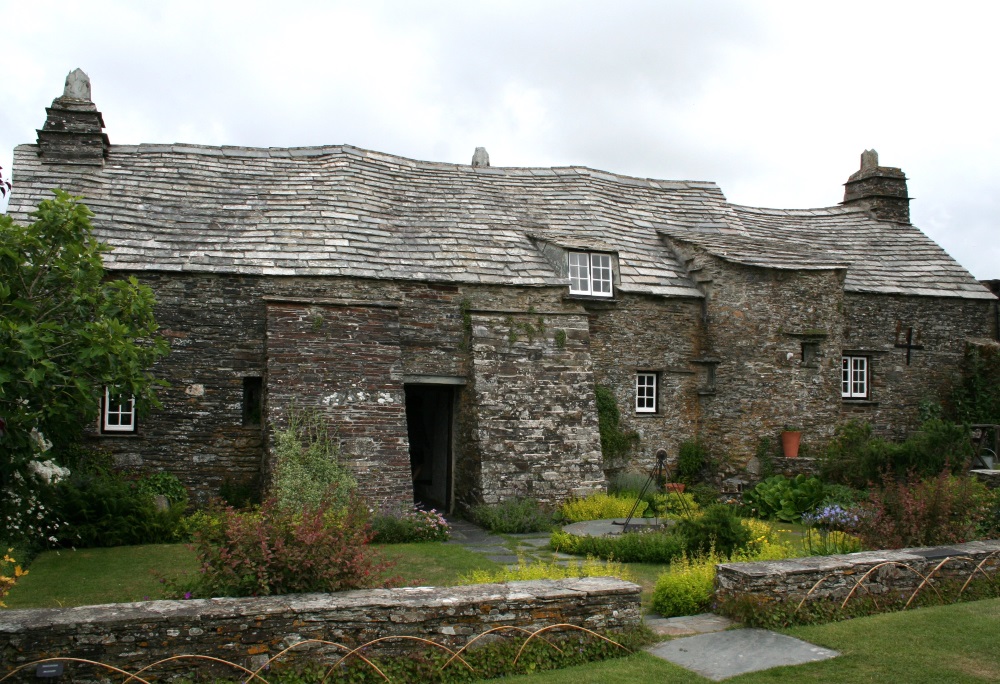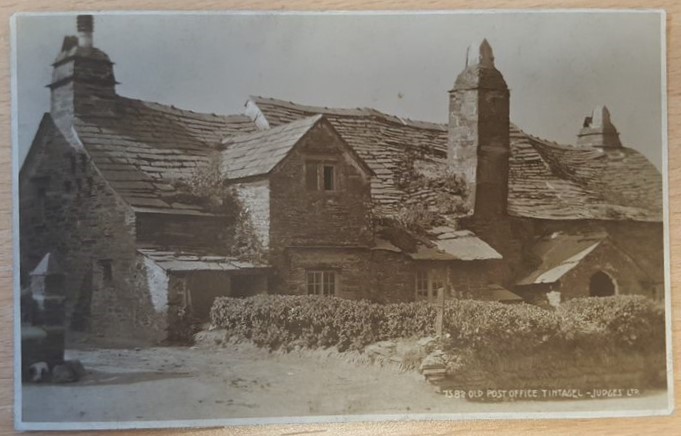Our archive officer Vicky West explains how to use our new catalogue using the example of a historic case, Tintagel Old Post Office
The SPAB archive catalogue has been online since the beginning of June 2021 and I hope that you have all been enjoying searching and browsing the descriptions of our archive files that have been uploaded so far.
The catalogue currently contains descriptions of our historic casework files - approx. 20,000 in total - that are stored at SPAB HQ and are available for anyone interested to consult, by appointment. The files include correspondence, reports, photographs, postcards, press cuttings and other papers that document the SPAB's involvement with a building or structure. Some files are very slim, others contain very detailed correspondence outlining what repair works were carried out, often under the supervision of a SPAB architect, and span decades. The majority of files contain an initial letter or report bringing the building to the attention of the SPAB and then our response.
The Old Post Office, Tintagel. Credit SPAB
To take you through an example, if you are interested in the Old Post Office in Tintagel, Cornwall you would search for a combination of words from “Old Post Office in Tintagel, Cornwall” e.g. “Post Office Cornwall” and you would get hits on a Super Archive file, a photograph from one of our historic photo albums, and three William Weir notebooks. The search results give details about each file including a title – if it is a casework file it will include the town, building name and county – reference number, covering dates, and a brief description of the file contents.
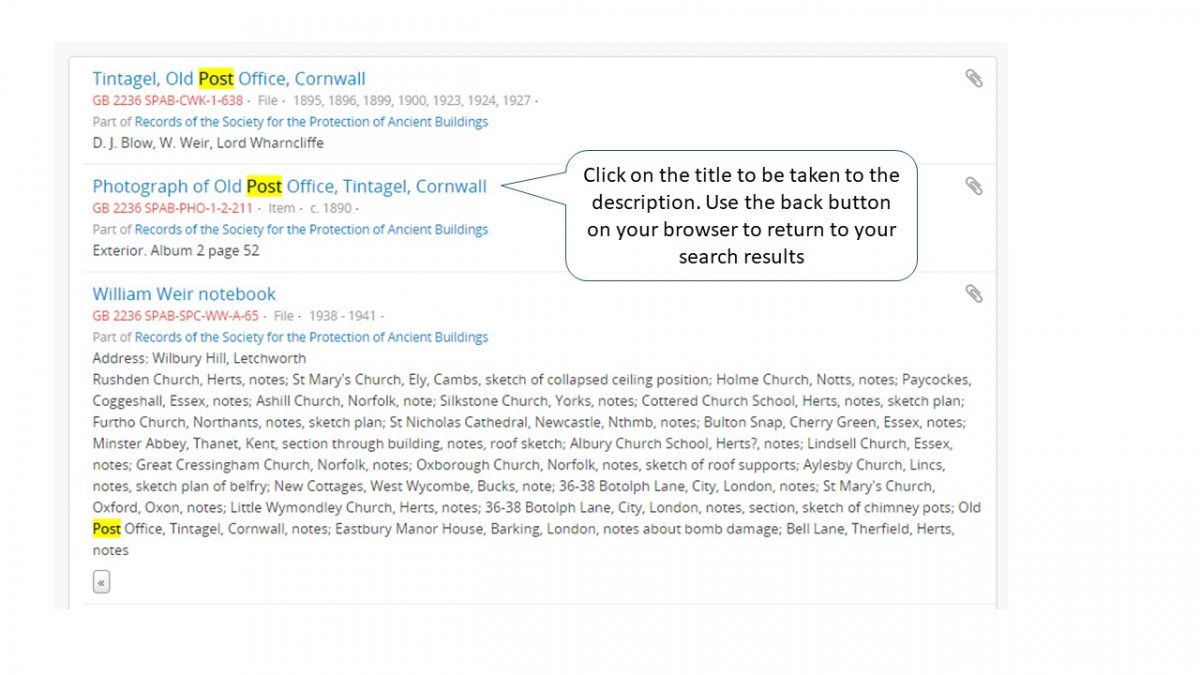
You can find more information about each of those hits by clicking on their title to get a fuller description which will include a file title, dates and the number of folders it comprises. There is also a brief description of the contents of the folder(s) and each file description has been tagged with a location made up of the county and country in which the building or structure is located.
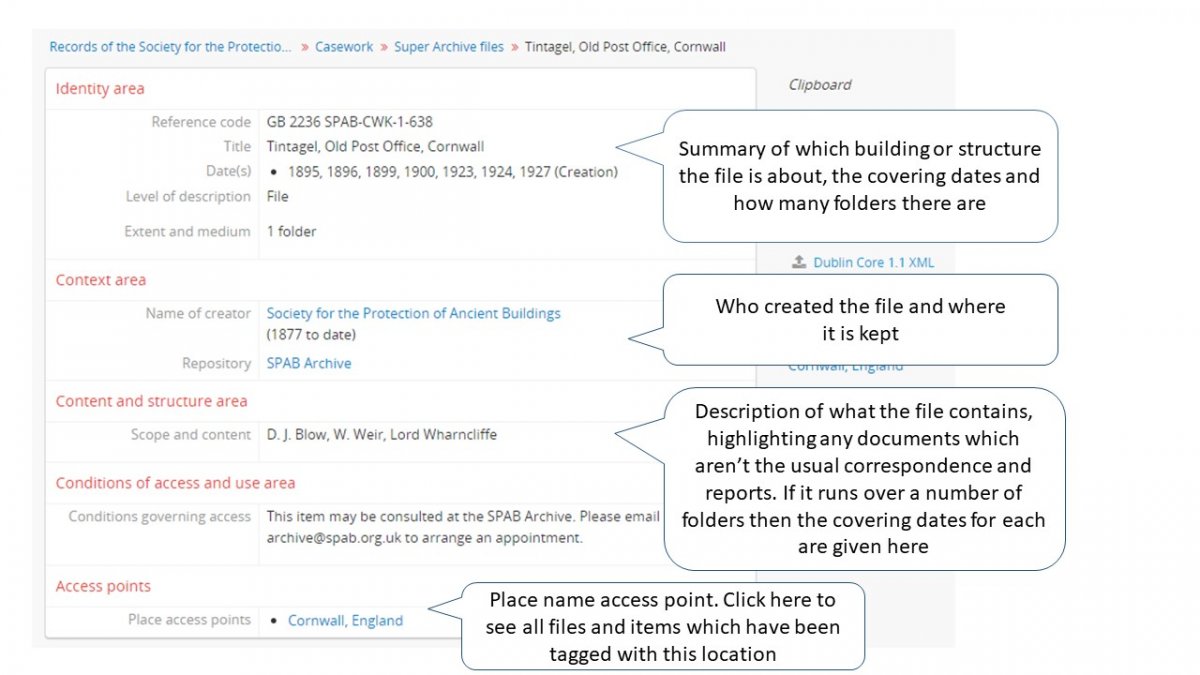
The location information in the file title and used as the location tag and is taken from the title given to the file when it was first opened, so there are instances where a file has an out of date county because there have been boundary changes since the file was opened. Where you notice this please let the Archive Officer know and the location tag can up updated to show the changes.
Once you have found the files that you would like to consult, get in touch with the Archive Officer to make an appointment to view them. If you are unable to visit in person then get in touch and we will help you access the information in the files remotely by providing a file summary or photographs of key documents.
What the archive file can tell us
Despite its name, Tintagel Old Post Office was first built c.1380 as a sturdy stone-built farmhouse. Its final use was as the letter-receiving office for the Cornish village during the 1870s. It's now cared for by the National Trust.
By the late-19th century, the building was in a dilapidated condition. In 1895 Constance Phillipson, one of the summer colony of watercolour artists, alerted the SPAB to its forthcoming auction. It appeared that the building, which had a good area of land with it, might be demolished and the site redeveloped for housing. It was sold on 12 September to Catherine Johns, from nearby Boscastle, who intended to repair it, but lacked necessary funds.
The Old Post Office in the 1890s. Credit: SPAB archive
SPAB Secretary Thackeray Turner (1853-1937) was sympathetic and requested architect and SPAB associate Detmar Blow (1867-1935) to visit and report. Blow estimated that an all-in cost of £350 (which included his fees) would be required for full repairs. Meanwhile Miss Phillipson had organised a sale of paintings which raised £147.15.0. for a repair fund. Despite a substantial shortfall, some repairs were under way by October 1896 as our files show that Blow certified payment of £70 to carpenter Brown of Boscastle, and claimed £60 fees for himself.
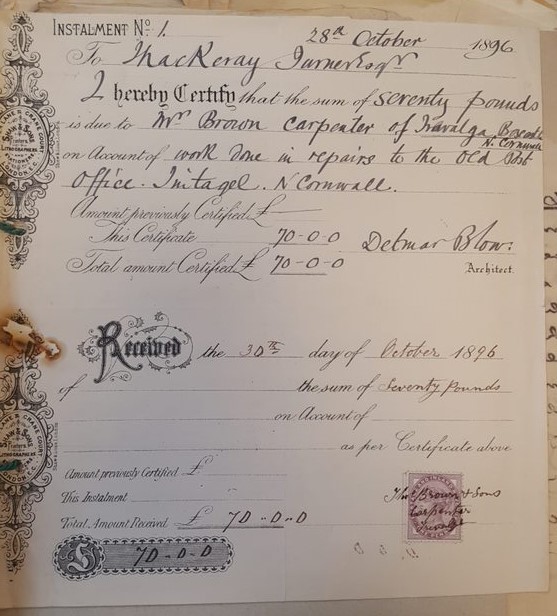
Payment of building work. Credit: SPAB archive
In January 1900 it was reported that Miss Johns intended to leave the house to the National Trust, and that its Secretary Hugh Blakiston had some plans for the enlargement of the Old Post Office. Turner consulted Blow who reported: “I venture to think that nothing but a one storeyed outhouse should be built on the ground adjoining the above house. The plans shown did not come within these limits”.
On 31 May Blakiston reported that the Trust had proposed to Miss Johns that the Trust purchase the building for £200 on the understanding that she had the lease of it for a nominal rent and that the building she proposed to add on should have an independent wall at the connection adjacent to the old building. The £200 was to be subscribed by Cornish people.
Read more about our archive and visit the online catalogue. Find out more about Tintagel Old Post Office on the National Trust's website.

